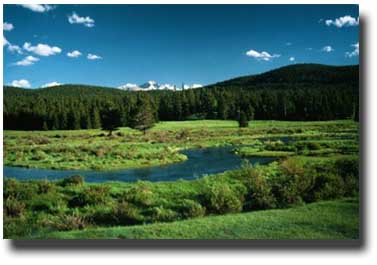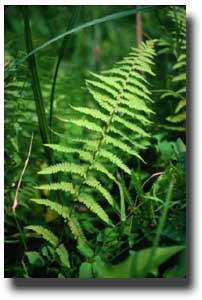Wet Meadows

Description
Wet meadows are a type of marsh that commonly occurs in poorly drained areas such as shallow lake basins, low-lying farmland, and the land between shallow marshes and upland areas. Some wet meadows are found high in the mountains on poorly drained soil. These wetlands, which often resemble grasslands, are typically drier than other marshes except during periods of seasonal high water. For most of the year wet meadows are without standing water, though the high water table allows the soil to remain saturated. A variety of water-loving grasses, sedges, rushes, and wetland wildflowers proliferate in the highly fertile soil of wet meadows.

Functions & Values
During periods of high rainfall, wet meadows collect runoff, reducing the likelihood of seasonal flooding to downstream low-lying areas. In the process of collecting and storing runoff, the vegetation of wet meadows removes the excess nutrients accumulated by the water, acting as a natural filter. This nutrient rich environment provides vital food and habitat for many insects, amphibians, reptiles, birds, and mammals.
Status
Wet meadows often occur in areas where farming is prevalent, leading historically to draining and filling of these wetlands for agricultural uses. Today, some recognize the importance of preserving these valuable wetlands, and efforts are underway to prevent further losses in some areas.
